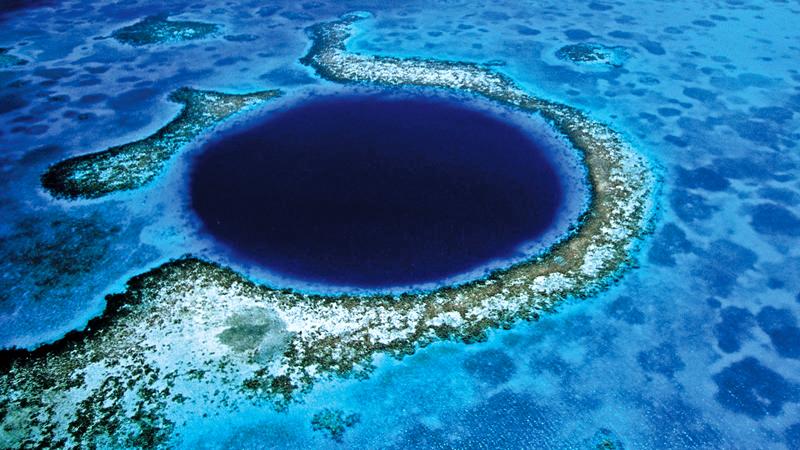
The Black Sea is not black and the White Sea is not white, but the Red Sea is sometimes red. Occasionally, tiny red marine organisms, known as dinoflagellates, reproduce in such numbers that they colour the entire sea red.
 A red tide occurs when there is a major abundance of nutrients in the water and continuous sunshine. When this happens, there can be well over 300 million dinoflagellates for every gallon of sea water, turning the sea a red or brown colour. However, when a bloom reaches these proportions, it becomes dangerous to people and animals.
A red tide occurs when there is a major abundance of nutrients in the water and continuous sunshine. When this happens, there can be well over 300 million dinoflagellates for every gallon of sea water, turning the sea a red or brown colour. However, when a bloom reaches these proportions, it becomes dangerous to people and animals.
A large bloom not only uses most of the oxygen in the water, causing fish to become asphyxiated, but each tiny dinoflagellate produces toxic poisons. In 1946, a red tide off Florida caused the death of an estimated 50 million fish and many people suffered food poisoning from eating contaminated mussels, clams and other seafood.
Phytoplankton
 Red tides aside, the oceans mainly appear blue. Clear, blue water, however, do contain few nutrients to sustain life, whereas the surface layers of murky green seas are packed with green chlorophyll containing phytoplankton that turn sunlight, water and carbon dioxide into sugars. This makes them the foundation of numerous marine food chains. Most life in the sea and maybe much of life on Earth, depends on their well-being. In temperate regions, the sea appears blue in winter but often turns green during the spring, when new life proliferates in it.
Red tides aside, the oceans mainly appear blue. Clear, blue water, however, do contain few nutrients to sustain life, whereas the surface layers of murky green seas are packed with green chlorophyll containing phytoplankton that turn sunlight, water and carbon dioxide into sugars. This makes them the foundation of numerous marine food chains. Most life in the sea and maybe much of life on Earth, depends on their well-being. In temperate regions, the sea appears blue in winter but often turns green during the spring, when new life proliferates in it.
At night, the sea’s surface can glow with an eerie green, purple or yellow light. This is because of countless tiny luminescent organisms that flash when disturbed, as in the wake of a whale swimming at the surface. It leaves a long trail of intense green “phosphorescence” from dinoflagellates and comb jellies bursting into light like underwater fireworks.
The ghostly glow has sparked off a tale: The Romans considered it an evil omen; the Bretons believed that the phosphorescence came from the glitter of precious stones in an undersea garden where the sea-god placed the souls of drowned men. Even science was baffled for a long time.
In the 7th century AD, it was thought that the glow was the result of the sea absorbing sunlight by day and emitting it at night. The American scholar and statesman Benjamin Franklin concluded that it was an electrical discharge between water and salt.
Undersea earthquakes
Sometimes, phosphorescence at the sea’s surface is in the form of a gigantic wheel, up to a mile which is 1.6 kilometres, or more in diameter, with waves of luminescence moving outwards like the ripples in a pool. The wheels may start with an explosion of flashing lights and spread outwards, rotating like the wheel of a bicycle. These phenomena may be the result of disturbances by small-scale undersea earthquakes on the seafloor.
Not all seas are coloured by living organisms. Rain leaches minerals from rocks and rivers wash debris down to the sea. The Yellow Sea is aptly named, for the sediments washed down by rivers from the Chinese mainland stain its waters a dirty yellow. One of the most extraordinary of sea colours is found in the mystery “muds” or “whitings” of the Great Bahama Bank. Whitings are huge patches of milky water found in the sea to the west of Andros and Abaco islands.
They resemble clouds in a blue sky, appearing to the crews of yachts as shallow white sandbanks in waters up to 30 feet deep. What causes them is hotly debated by rival scientists.
Whitings
The local belief is that they are caused by enormous shoals of small fish, “Whitings” that disturb the bottom deposits.
The sediments are formed from the bodies of millions of minute algae, known as Penicillus, that form crystals of chalk inside their tiny bodies. When they die the cells rot and the needle-shaped crystals fall to the seabed. The fish stir them up, or so one of the theories suggests.
Nevertheless, the only fish to be seen regularly in the whitings, are sharks. These sharks are not the ordinary grey or grey-blue sharks many of us are used to aware of. Instead, the sharks found in these areas are snow-white sharks of about three feet in length.
They swim through the white patches of the sea, invisible except for the black tips of their dorsal fins. Exactly what lies behind the whitings and their strangely adapted pure white sharks still remains a mystery.
